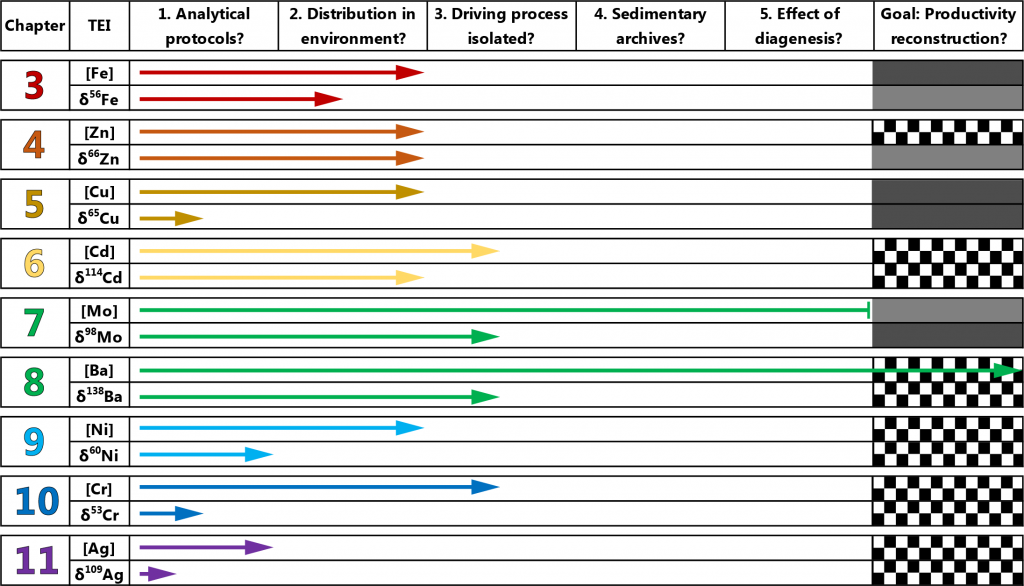Pros and cons of nine bioactive trace elements as tracers of modern and paleo-productivity
Horner and co-authors (2021, see reference below) assess whether nine bioactive trace metals – iron (Fe), zinc (Zn), copper (Cu), cadmium (Cd), molybdenum (Mo), barium (Ba), nickel (Ni), chromium (Cr), and silver (Ag) – and their isotopes can be used as paleo-productivity proxies. Drawing on GEOTRACES datasets, their goal is to contribute to develop a comprehensive understanding of the marine behavior of these elements, including: mapping their distribution; elucidating the drivers of these distributions; characterizing sources, sinks, and transformations associated with biological, physical and chemical (notably redox) reactions; and, eventually recognizing if (and how) a given element is incorporated and preserved in marine sediments.
They find that cadmium, barium, nickel, and chromium isotopes (δ114Cd, δ138Ba, δ60Ni, and δ53Cr) show the most promise as productivity tracers; however, their distributions are not controlled locally by dissolved–particulate transformations, but instead offer a regionally integrated history of vertical cycling and mixing that is imparted over the scale of an ocean basin. Indeed, the major features of the low latitude distributions of these four elements are set in the Southern Ocean. In addition to these common features, the study identifies several aspects of the biogeochemical cycle of each element that are often unique. Combining these unique behaviors could be an opportunity, leading to a more complete picture of marine paleoproductivity, biogeochemical cycles, and Earth’s climate history.

This synthesis paper results from the joint GEOTRACES-PAGES workshop (Aix en Provence, France, December 2018). Please also read the science highlight from Fermer et al. paper “Assessment of C, N and Si isotopes as tracers of past ocean nutrient and carbon cycling” also resulting from this workshop.
Reference:
Horner, T. J., Little, S. H., Conway, T. M., Farmer, J. R., Hertzberg, J. E., Janssen, D. J., Lough, A.J.M., McKay, J., Tessin, A., Galer, S.J.G., Jaccard, S.L., Lacan, F., Paytan, A., Wuttig, K. GEOTRACES–PAGES Biological Productivity Working Group Members (2021). Bioactive trace metals and their isotopes as paleoproductivity proxies: An assessment using GEOTRACES‐era data. Global Biogeochemical Cycles, e2020GB006814. https://doi.org/10.1029/2020GB006814
